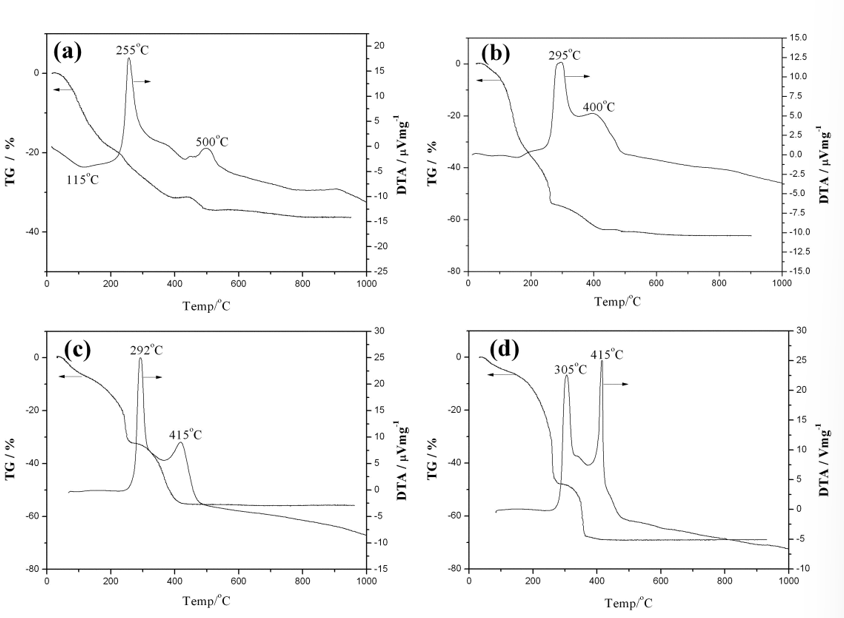The figure shows the TG-DTA curve of titanium dioxide gel microspheres with different amounts of liquid paraffin. It can be seen from the figure that with the increase of the amount of liquid paraffin, the powder presents different thermal behavior. In the DTA curve of the powder obtained without adding liquid paraffin, there is a heat absorption peak of 115 ℃ . The heat absorption peak here is related to the weight loss between 30 and 200 ℃ in the TG curve, which is speculated to be due to the evaporation of the remaining water in the powder. The exothermic peak at 255 ℃ in the DTA curve is also accompanied by the weight loss in the TG curve, and it is speculated that the exothermic peak and the corresponding weight loss here should be attributed to the combustion of the gel structure. The residual butoxide group and n-octanol in the powder decompose at this temperature and produce a large amount of oxygen, thus accelerating the combustion process of the gel. The second exothermic peak near 500℃ in the DTA curve is also accompanied by a certain weight loss, with a weight loss ratio of about 2%. This may be due to the breakdown of residual organic matter. According to the TG curve of the powder with liquid paraffin added, it can be seen that the weight loss of the powder obtained is greater than that of the powder without liquid paraffin added during the heating process. In the DTA curve, there are two exothermic peaks. The first exothermic peak is around 300oC and is accompanied by a certain amount of weightlessness. This exothermic peak should be attributed to the combustion process of titania gel microspheres. The second exothermic peak is about 400℃ , and according to the trend that its peak strength increases with the increase of the amount of liquid paraffin, the exothermic release here should be caused by the combustion of liquid paraffin in the titanium dioxide gel microspheres. In the DTA curve of the powder obtained by adding liquid paraffin, there is no exothermic peak near 500℃ as shown in the figure, which further implies the different thermal behavior of the powder obtained before and after adding liquid paraffin.






















